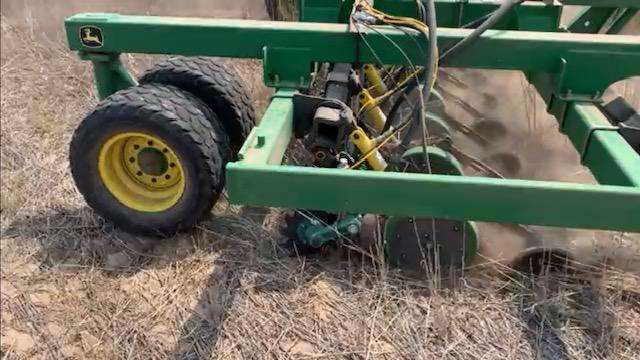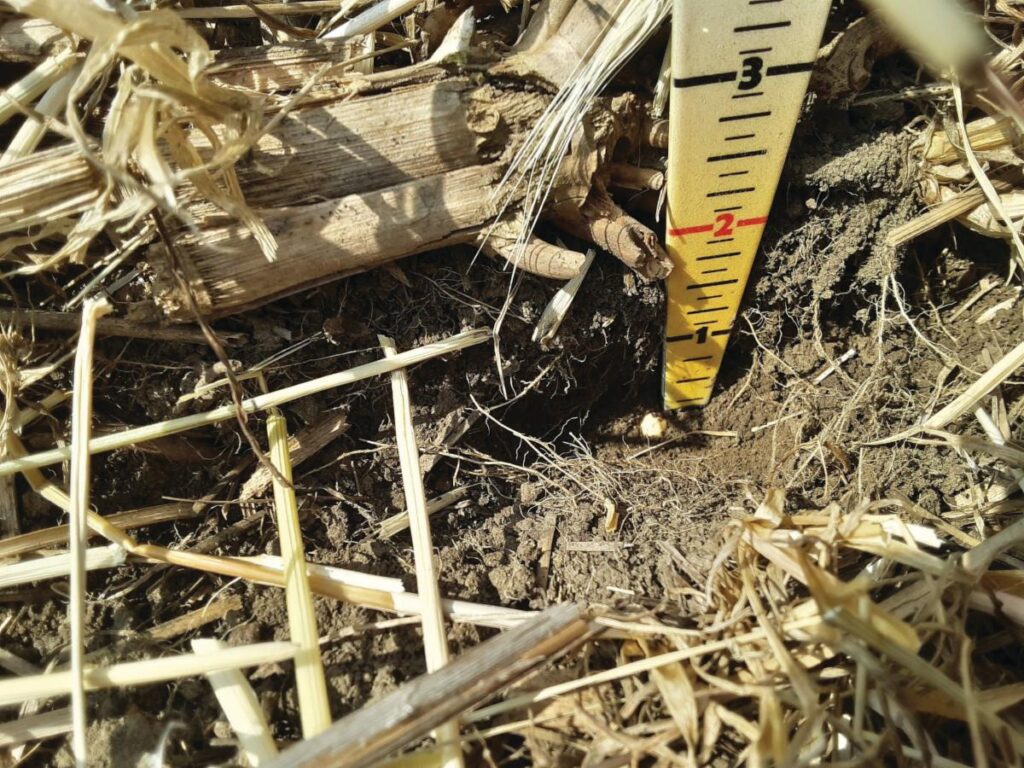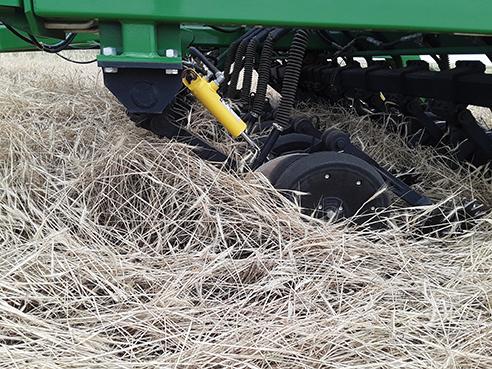This topic continues to be a major issue when no-tilling‚ and with good reason. How do you plant through all of the residues left on the surface? You have the option to move it out of the way, or leverage down pressure, along with sharp blades, to cut through it. As discussed in previous newsletters, this topic starts with harvest. Making sure residue spread is even, along with running the header so small amounts chopped up through the combine, will solve a lot of this issue come planting time. Larger pieces of stalk are easier to cut through with down pressure, while small, chopped pieces are best cleared with row cleaners.
We get the question quite often, “Which is a better use of my money, UniForce or row cleaners on my drill?” Both options are close in cost ($600-650 a row), but if not being able to plant through residue is the issue, which one will help the most? This is not really an apples-to-apples comparison as they can both be needed or used to improve conditions. Let’s look at benefits of each as to the positives they bring to the table.
Row cleaners can be a much-appreciated help when mother nature decides to move your evenly spread residue around with wind or rain. Piles and thick spots will need to be cleared so the openers can penetrate to planting depth. In northern states, where residue breakdown is much slower, row cleaners can add to productivity of the drill by allowing for an earlier start and running later in the evening, even when the dew tends to make cutting wet residue harder. The biggest downside to row cleaners on a drill is the narrow spacing can make it hard to have enough room to move the residue to the side. Which is why keeping sharp blades and enough down pressure to cut through residue, can be a better choice on narrow row spacings.
UniForce has multiple benefits. Besides allowing higher down-pressure than springs (max to 700 lbs.), the hydraulic cylinders on each row keep the pressure constant for the full range of motion of the row unit. Because Exapta wanted to keep it simple and cost-effective (since cost increases quickly on a drill with 7.5” row spacing), pressure is manually adjusted, and the system is down-pressure only. If you’re looking for fully automated down-force, you’re better off using a planter to also meter the seeds for more accuracy. The actual downforce ranges the spring maintains going across the field is very small (inch or less). This is why we see UniForce helping to cut through residue better, as the pressure is constant over root balls and stems where the spring could be relaxing in that situation. In addition to cutting ability being improved, when down force is consistent, the opener depth should be consistent, which means every seed at the same depth. This has always been an issue with drills, as seed placement is not as precise as it is with a planter. With UniForce, we have seen much better placement in soybeans, where farmers have been able to reduce seeding rates.
UniForce will not only improve the down-pressure to cut through residue better, but it will make seed depth more consistent throughout the field. If you have trouble cutting residue only at certain times of the day or year or have known issues in the field with piles and inconsistent spread, row cleaners will be a better investment to fix those problems. In most fields, if you see hair-pinning of residue and you just replaced the blades with sharp, new ones, then UniForce can be beneficial to help the drill overall. Sharp blades and consistent down-pressure will really help a drill to perform much closer to a planter on seed placement. This will add up to more even emergence after planting and greater opportunity for success at season’s end.



